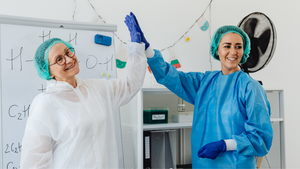ALEM gives donated organs a second day of life
A Kazakhstan university's breakthrough system promises to expand organ transplant networks and add crucial time for surgery.

In transplantation, the most unforgiving variable is time. For decades, the standard practice of packing donor organs in ice has offered a narrow four-to-six-hour window before viability falls off. That constraint limits long-distance transport, forces rushed clinical planning, and keeps many patients, especially in remote regions, on the wrong side of the clock.
Dr Yuriy Pya, Chairman of the Executive Board of University Medical Centre (UMC) at Nazarbayev University and project leader for the ALEM system, has been working with a large interdisciplinary team to change that equation. “An idea means nothing if it is not brought to life,” he said.
ALEM (Astana Life Ex-situ Machine) is their home-grown preservation platform designed to keep organs functioning ex-situ for more than 24 hours under near-physiological conditions, while continuously tracking temperature, pressure, and biochemical markers.
Critically, the system also enables therapeutic interventions to improve organ quality prior to transplant when immediate use is not possible.
How does ALEM work
ALEM is an advanced normothermic machine perfusion platform. It is a circuit that maintains body-like temperature, oxygenation, and perfused flow outside the body. The result is a dynamic environment that mitigates ischaemic injury and lets clinicians monitor and optimise the organ in real time, capabilities that static cold storage cannot provide.
In Kazakhstan’s vast geography, where clinics can be thousands of kilometres apart and weather disrupts routes, this extended window can mean the difference between a transplant that proceeds and one that never happens.
Five years, 44 procedures, and a 24-hour threshold
From first concept to working prototype, development took more than five years. In 2022, the team ran a full pre-clinical programme in pigs: 44 procedures, including 10 transplantations with donor heart preservation. Early versions matched the familiar four-hour limit; iteration by iteration, preservation time climbed to the 24-hour mark.
“At the beginning, when we started testing the device, the preservation time was the standard four hours. With each new study, this time gradually increased. As a result, we can now preserve organs for up to 24 hours, which is a major achievement for us,” he said.
The team also tested vibration and temperature fluctuations to simulate transport. The final device is compact, mobile, user-friendly, and built to slot into existing transplant workflows. The technology was shown publicly at Expo 2025 Osaka this year.
Why this matters in remote regions
In many African settings, the six-hour window effectively rules out cross-regional organ sharing. With an ex-situ golden day instead of golden hours, transplant networks can broaden their catchment, match organs based on biology rather than geography, and give surgical teams time to prepare recipients safely. That shift reduces waste from discarded organs and increases equity, particularly for patients far from tertiary centres.
A small but expanding market segment
Though niche, the organ preservation market is growing steadily as machine perfusion moves from early adopters towards standard of care. Estimates place the market at around $273 million in 2024, with projections to about $412 million by 2030, growing at a CAGR of about 7.2%.
The Global Observatory on Donation and Transplantation (GODT) counted around 157,500 solid-organ transplants in 2022, noting this still accounts for less than 10% of global need. For health systems and investors, any technology that expands the usable window and thus the effective supply addresses a structural bottleneck, not a marginal convenience.
Cost, training, and adoption
TransMedics’ Organ Care System is one example of a known perfusion platform, but high per-procedure disposable costs and logistics limit access. ALEM aims for a different cost curve: local production and reduced reliance on imported consumables to keep device and operating costs down, an important consideration for low- and middle-income health systems.
On adoption, Dr Pya emphasises hands-on training by the inventing team, which included surgeons, perfusionists, engineers, and nurses, to integrate ALEM with minimal disruption. Because the system is built around familiar perfusion principles and continuous monitoring, the learning curve for transplant centres should be manageable when supported by on-site training.
From Central Asia to wider collaboration
The deployment roadmap starts in Central Asia, where transplantation programmes are still maturing and distances mirror ALEM’s original use case. From there, the team sees room for broader international collaboration, especially in regions where infrastructure and travel time have historically blocked transplantation even when donors and recipients are aligned.
What B2B stakeholders should watch
• Clinical validation: Pre-clinical results are promising; multi-centre clinical trials will be the decisive next step for outcomes, safety, and regulator confidence.
• Procurement economics: If ALEM delivers comparable preservation with lower recurring costs, the total cost of ownership could favour wider adoption in resource-constrained settings.
• Network effects: Longer preservation enables regional sharing models, which can lift utilisation rates and improve matching.
• Policy alignment: Ministries and payers weighing transplant reform should treat extended-time perfusion as infrastructure, not a luxury.
The human throughline
Asked what drives the work, Dr Pya’s answer is simple: saving patients’ lives. If ALEM changes even one trajectory, he says, it matters: “If ALEM can change the fate of even one person, it will already be a significant achievement for us. And if it can help thousands, then this technology was truly created for a purpose.”
That human calculus, multiplied by an extra 18 hours or more per organ, frames why ex-situ perfusion is more than clever engineering. It is time, returned to clinicians and patients who have never had enough of it.
